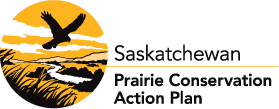Why a SK PCAP Partnership
 Our remaining native prairie is a valuable resource that touches many lives and many interest groups. Some, such as ranchers, rely on the sustainable use of prairie for their livelihood. For others, native prairie may be of cultural, spiritual or recreational importance. Many landowners, land managers, all governance types (Federal, Provincial, local and Indigenous) and nongovernment agencies play a role in the stewardship and protection of native prairie as well, representing many interests. Integrating these efforts and defining common outcomes among the players is fundamental to effective prairie conservation.
Our remaining native prairie is a valuable resource that touches many lives and many interest groups. Some, such as ranchers, rely on the sustainable use of prairie for their livelihood. For others, native prairie may be of cultural, spiritual or recreational importance. Many landowners, land managers, all governance types (Federal, Provincial, local and Indigenous) and nongovernment agencies play a role in the stewardship and protection of native prairie as well, representing many interests. Integrating these efforts and defining common outcomes among the players is fundamental to effective prairie conservation.
Since 1998, the Prairie Conservation Action Plan (SK PCAP) Partnership has brought together agencies and organizations representing producers, industry, provincial and federal governments, non-government organizations and research and
educational institutions under a common vision for prairie and species at risk conservation in Saskatchewan.
The PCAP Partnership works to:
- Develop and foster common vision and goals, identify priority issues and develop and implement actions to address conservation and sustainable management of native prairie;
- Identify and fill gaps in native prairie research and activities among the partners, reducing duplication;
- Improve public understanding and valuing of native prairie through initiatives such as the Native Prairie Appreciation Week;
- Share ideas and find common ground where possible while respecting different perspectives.
.
.
.
1 Gauthier, D.A., A. Lafon, T.P. Toombs, J. Hoth, and E. Wiken. 2003. Grasslands: Toward a North American Conservation Strategy. Commission for Environmental Cooperation and the Canadian Plains Research Center, University of Regina, Regina, Saskatchewan.
2 Hammermeister, A.M., D. Gauthier, and K. McGovern. 2001. Saskatchewan's Native Prairie: Statistics of a Vanishing Ecosystem and Dwindling Resource. Native Plant Society of Saskatchewan Inc., Saskatoon, Saskatchewan.
3 Watmough, M.D. and M.J. Schmoll. 2007. Environment Canada's Prairie and Northern Habitat Monitoring Program Phase II: Recent habitat trends in the PHJV. Unpublished Report. Environment Canada, Canadian Wildlife Service, Edmonton, Alberta.

